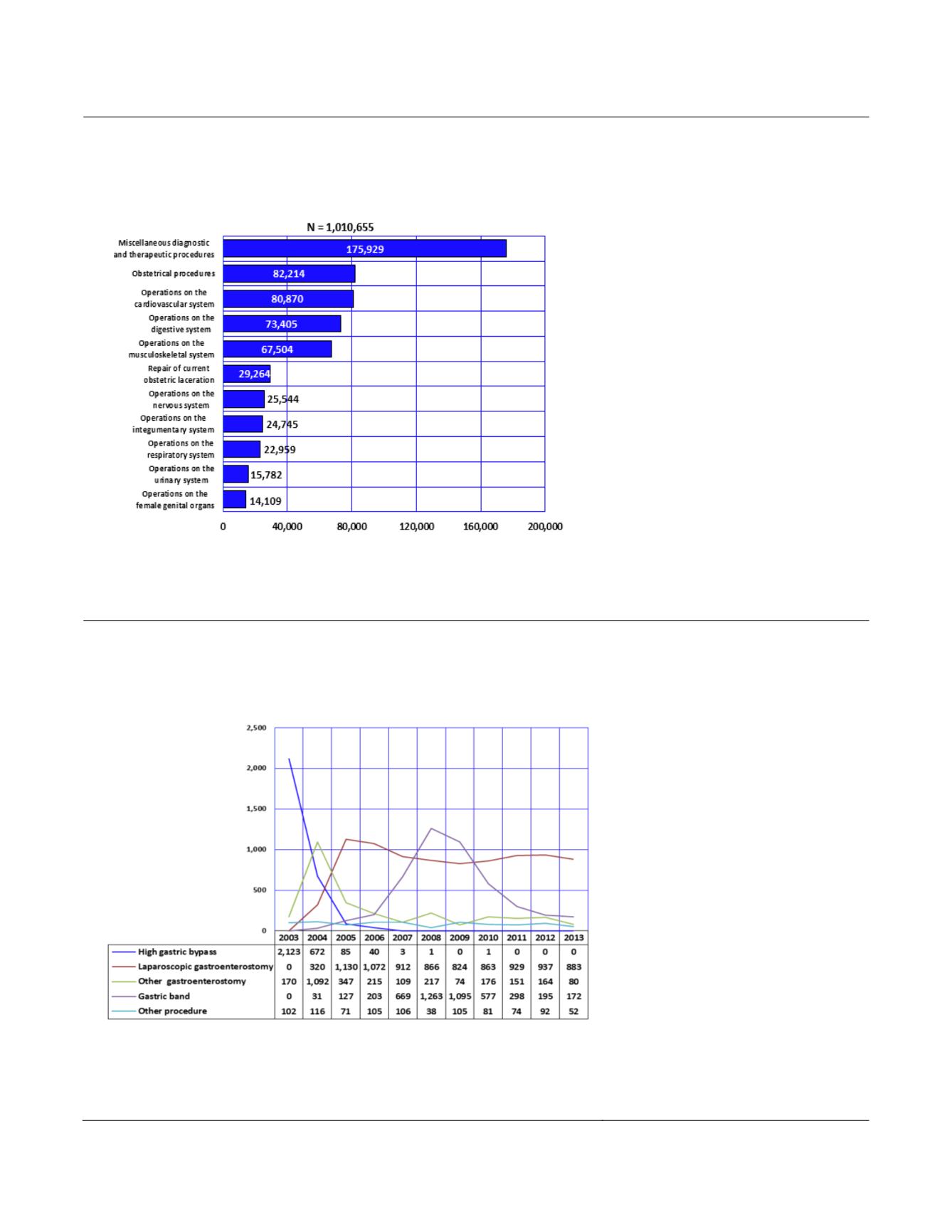
4B. I
NPATIENT
D
ISCHARGES FROM
S
HORT
-S
TAY
H
OSPITALS BY
A
LL
-L
ISTED
P
ROCEDURES AND
P
ATIENT
C
HARACTERISTICS
Figure4B-1
Ten LeadingCategories of All-listed Inpatient Procedures,
ArizonaResidents, 2013
During 2013, 1,010,655 procedures
were performed among the 636,535
total inpatient discharges to Arizona
residents. The rate of procedures was
1,535.7 per 10,000 population. For
Arizona males, this rate was
1,353.5/10,000, and for Arizona
females it was 1,716.1/10,000.
No specific procedure was recorded for
approximately 45.7 percent of all
inpatient discharges. Only 6.4 percent
of inpatients had six procedures
reported. Among the inpatient
discharges which had one or more
specific procedures recorded, the most
frequent were miscellaneous diagnostic
and therapeutic procedures (such as
arteriography and angiocardiography
or respiratory therapy), followed by
obstetrical procedures, operations on
the cardiovascular system, and
operations on the digestive system
(
Figure4B-1, Table4B1
).
Figure4B-2
Trends inTypes of Inpatient Procedures Performed inTreatment ofMorbid
Obesity, ArizonaResidents, 2003-2013
Note: The frequency counts in Figure 4B-2 are based on the principal procedure. The tabulated data use all six listed
procedures.
Bariatrics is a branch of medicine that
deals with the surgical treatment of
obesity. Bariatric surgery has seen a
rather dramatic increase in its
popularity. A typical candidate for
gastrointestinal surgery has a body
mass index (BMI) of 40 or more ?
about 100 pounds overweight for men
and 80 pounds for women. Bariatric
surgery may also be considered for
someone whose BMI is between 35 and
39.9 and who has a serious obesity-
related health problem (such as type
2-diabetes, heart disease, or severe
sleep apnea).
In 2013,
morbid obesity
(ICD-9-CM
code 278.01) was the principal
diagnosis
for
2,113
inpatient
hospitalizations (
Table 4A-1
). The
number of
gastric bypass
surgeries,
once the most common bariatric
procedure, declined from a recent high
of 2,123 in 2003 to only 2 gastric
bypass surgeries being completed in
the past 6 years (
Figure 4B-2
). Not a
single
laparoscopic gastroenterostomy
procedure was reported in Arizona
prior to 2004. In 2013, it was themost
popular, with 883 procedures
performed.
244
Arizona Health Status and Vital Statistics 2013


